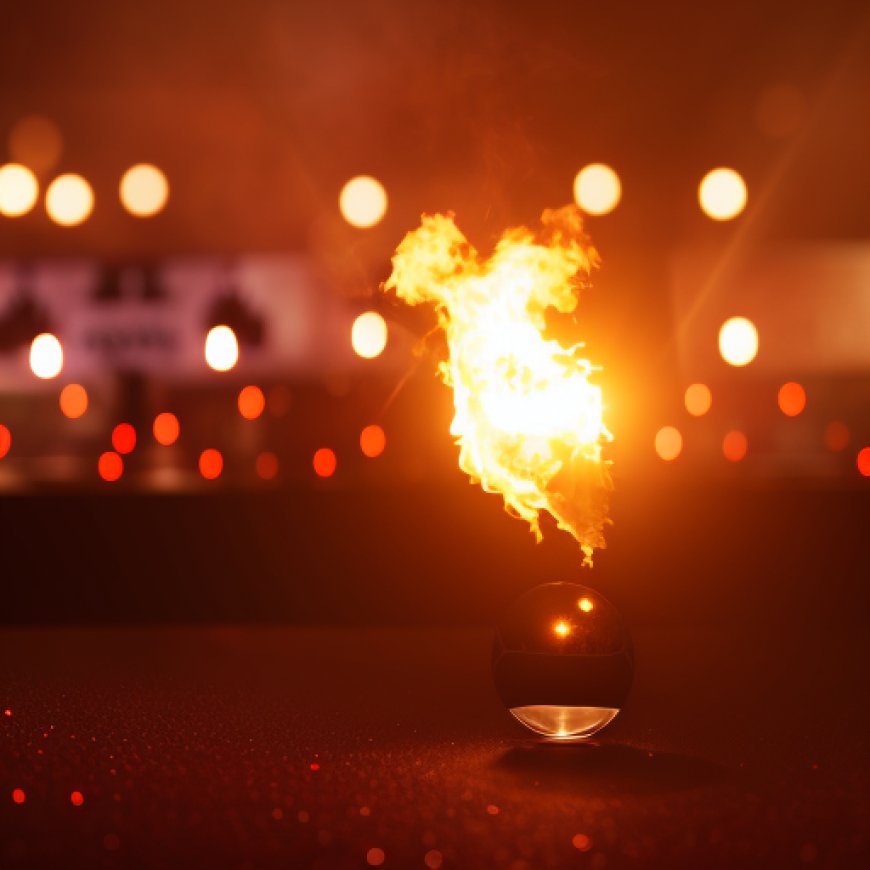The world is on fire – and the NBA wants to be part of the solution
The world is on fire – and the NBA wants to be part of the solution The Guardian


The NBA’s Efforts Towards Sustainable Development Goals
From a climate perspective, the world is in peril. It’s undeniable at this point. Today, though, there are organizations working to find solutions. But when it comes to the universe of pro sports, which has long been a source of pollution like other big businesses, where can answers be found? That’s the question those within leagues like the National Basketball Association are debating now. While the NBA has its own challenges when it comes to air travel and its carbon footprint, the league is also progressing forward with substantive changes, small and large, to assuage the climate crisis. And it’s in a unique position to do just that.
The NBA’s Role in Addressing Climate Change
Unlike anonymous research departments or lesser-known scientific organizations, the NBA is one of the most popular outfits in the world. It’s on the minds and lips of millions of people on a daily basis. This gives it the chance to manufacture change. A point not lost on many around the league.
When considering the precarious state of the climate, human beings did not get here without fault or by accident. It’s industry that has created a plethora of greenhouse gases, plastic waste and poor farming practices. But maybe it’s industry that can help to remedy the mistakes we’ve made. That’s the bet some around the NBA are making. Today, the league’s environmental branch, known as NBA Green, which has been active since 2008, initiated by former commissioner David Stern, has taken on a greater focus internally as of 2019. And it has many problems to solve. According to Le Monde, as of the 2018-19 season, the NBA is the biggest polluter when it comes to its travel schedule, though the NFL averages the biggest carbon footprint a game and lowest environmental disclosure rate. (MLB, which plays many of its games in the open air, ranks best in both.)
The Impact of Fan Travel
As a league, the NBA boasts 30 teams and each plays 41 games on the road; that’s a lot of airline miles. But it’s not just about team travel. In fact, that’s a drop in the bucket, says Justin Zeulner, founder and president of The Wave Foundation, who’s worked with the NBA for decades on environmental matters. He says that the largest factor when it comes to carbon emissions is caused by fans. “The biggest ecological impact of running events,” Zeulner tells the Guardian, “is actually the fan travel. That can be anywhere between 65% and 80% of a carbon footprint of the event industry.” While team travel, Zeulner says, clocks in at less than 5%.
Focusing on Food Sourcing
The Portland-based Zeulner started his NBA-related environmental work with the late-Portland Trail Blazers owner Paul Allen several decades ago. The Blazers, Zeulner says, was the first team in professional sports in North America to take a hard look at its climate record – something Allen particularly pushed for. Zeulner and his staff created the blueprint for how to tackle certain climate-related goals that has since been adopted by the NBA. The effort had been a Pacific Northwest-based initiative but it has since been accepted on a bigger scale and is now known as Green Sports Alliance, an organization that works with multiple pro sports leagues. “Twelve years later,” Zeulner says, “things have progressed at a very high level.”
In past years, the NBA has looked at problems from air travel to fan transportation to food waste and plastic usage, all with at least some positive results, he says. But now the main goal is food sourcing, explains Zeulner. This is where the NBA is starting to make major strides. “The biggest opportunity is to leverage that cultural infrastructure and passion that sports fans have for the brand,” Zeulner says. “That’s where things get really exciting.” And this is where positive news comes into play.
Regenerative Food Systems
“What we’ve learned is that this is a competitive industry,” Zeulner says. “Once something has been done and accomplished, duplication happens, like, immediately. Now, it’s just, what is the next phase of this? A lot of effort has been put into plastics and cups, reusables, compostables. And that still needs work and it’s moving in the right direction. But we’ve got to now move on to the next phases. We’re pretty [bullish] in believing that food systems is the key to unlock this.”
With the NBA and its partner arenas, there is a big opportunity when it comes to food and food budgets, Zeulner explains. “It’s just part of their business,” he says, adding that if leagues and arenas begin to invest in new food sourcing, that could restore farms and soil quality, which in turn could affect the level of greenhouse gases in the Earth’s atmosphere. It’s not about going vegan or some other extreme dietary measure. It’s about how food is sourced. “We can make beef hamburgers in a way that’s regenerative,” he says. “Every burger you’re eating can be healthier for you, taste better and be healthier for the planet. That’s the future.”
There’s another benefit, Zeulner says. Many of the farms that are doing this the right way are smaller. “Most of these farmers and ranchers are Black and Latino, are tribal, are women-owned, rural, small, community-based and they haven’t been given the same opportunity to participate,” he says. They aren’t giant factory farms that rely on short-term practices. Instead, they’re farms focusing on traditional methods run often by marginalized folks.
“It’s how we originally started farming and ranching. Way before the introduction of petroleum-based fertilizers that depleted soils and created droughts,” Zeulner says.
Other Sustainable Initiatives in the NBA
SDGs, Targets, and Indicators
-
SDG 13: Climate Action
- Target 13.2: Integrate climate change measures into national policies, strategies, and planning
- Target 13.3: Improve education, awareness-raising, and human and institutional capacity on climate change mitigation, adaptation, impact reduction, and early warning
- Indicator: Carbon footprint reduction measures implemented by the NBA
-
SDG 12: Responsible Consumption and Production
- Target 12.2: By 2030, achieve the sustainable management and efficient use of natural resources
- Target 12.5: By 2030, substantially reduce waste generation through prevention, reduction, recycling, and reuse
- Indicator: Reduction of plastic waste and food waste in NBA arenas
-
SDG 15: Life on Land
- Target 15.3: By 2030, combat desertification, restore degraded land, and soil, including land affected by desertification, drought, and floods
- Target 15.9: By 2020, integrate ecosystem and biodiversity values into national and local planning, development processes, poverty reduction strategies, and accounts
- Indicator: Adoption of regenerative farming practices by NBA teams to restore soil quality and reduce greenhouse gas emissions
Analysis
SDG 13: Climate Action
- Target 13.2: Integrate climate change measures into national policies, strategies, and planning
- Target 13.3: Improve education, awareness-raising, and human and institutional capacity on climate change mitigation, adaptation, impact reduction, and early warning
- Indicator: Carbon footprint reduction measures implemented by the NBA
SDG 12: Responsible Consumption and Production
- Target 12.2: By 2030, achieve the sustainable management and efficient use of natural resources
- Target 12.5: By 2030, substantially reduce waste generation through prevention, reduction, recycling, and reuse
- Indicator: Reduction of plastic waste and food waste in NBA arenas
SDG 15: Life on Land
- Target 15.3: By 2030, combat desertification, restore degraded land, and soil, including land affected by desertification, drought, and floods
- Target 15.9: By 2020, integrate ecosystem and biodiversity values into national and local planning, development processes, poverty reduction strategies, and accounts
- Indicator: Adoption of regenerative farming practices by NBA teams to restore soil quality and reduce greenhouse gas emissions
The article discusses the efforts of the NBA to address environmental issues and contribute to sustainable development. Based on the content, the following SDGs, targets, and indicators can be identified:
1. SDG 13: Climate Action
The NBA’s initiatives aim to mitigate climate change and reduce the carbon footprint of the league. The article mentions the NBA’s goal of reducing its carbon footprint by 50% by 2030, which aligns with Target 13.2 of integrating climate change measures into policies and planning. The indicator for this SDG is the implementation of carbon footprint reduction measures by the NBA.
2. SDG 12: Responsible Consumption and Production
The NBA is working towards responsible consumption and production by addressing waste generation and promoting sustainable resource management. The article highlights the NBA’s efforts to reduce plastic waste and food waste in arenas, which align with Target 12.5 of reducing waste generation. The indicator for this SDG is the reduction of plastic waste and food waste in NBA arenas.
3. SDG 15: Life on Land
The NBA is also focusing on land restoration and sustainable farming practices to combat desertification and restore degraded land. The article mentions the NBA’s goal of sourcing food from regenerative-grown products, which aligns with Target 15.3 of restoring degraded land and soil. The indicator for this SDG is the adoption of regenerative farming practices by NBA teams to restore soil quality and reduce greenhouse gas emissions.
Table: SDGs, Targets, and Indicators
| SDGs | Targets | Indicators |
|---|---|---|
| SDG 13: Climate Action |
|
Carbon footprint reduction measures implemented by the NBA |
| SDG 12: Responsible Consumption and Production |
|
Reduction of plastic waste and food waste in NBA arenas |
| SDG 15: Life on Land |
|
Adoption of regenerative farming practices by NBA teams to restore soil quality and reduce greenhouse gas emissions |
Copyright: Dive into this article, curated with care by SDG Investors Inc. Our advanced AI technology searches through vast amounts of data to spotlight how we are all moving forward with the Sustainable Development Goals. While we own the rights to this content, we invite you to share it to help spread knowledge and spark action on the SDGs.
Fuente: theguardian.com

Join us, as fellow seekers of change, on a transformative journey at https://sdgtalks.ai/welcome, where you can become a member and actively contribute to shaping a brighter future.







